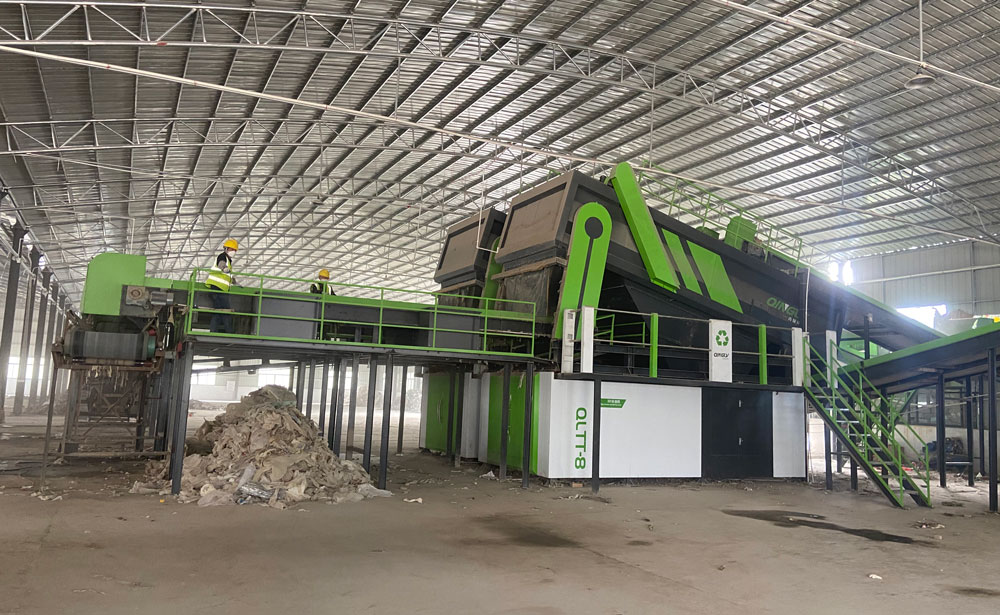 Time:2025-01-23
Time:2025-01-23
 Source:青绿环境
Source:青绿环境
In modern society, with the increasing awareness of environmental protection and the growing importance of resource recycling, waste sorting centers, as an indispensable part of the waste management system, have attracted significant attention in terms of their operational models and profitability. To make a waste sorting center profitable, efforts must be made in several aspects, including optimizing management processes, improving sorting efficiency, expanding market channels, and introducing innovative technologies.

Waste Sorting Center Equipment
I. Refining Management to Reduce Operating Costs
First and foremost, controlling and reducing costs through refined management is crucial. This includes, but is not limited to, the effective allocation of human resources, the formulation of equipment maintenance and renewal strategies, and the monitoring and implementation of energy-saving measures. For example, the use of automated sorting equipment can reduce human operational errors while lowering labor costs. Regular maintenance of equipment can extend its lifespan and avoid unnecessary replacement costs. Moreover, utilizing data analysis tools to optimize workflows and ensure efficient operations at every stage is also an important means of reducing waste.
II. Enhancing Sorting Accuracy to Increase Resource Value
Secondly, improving the accuracy and precision of waste sorting directly increases the value of recyclable materials. High-purity paper, plastic, and metal materials are often more popular and command higher prices in the market. Therefore, investing in advanced sorting technologies and training a professional workforce is essential for enhancing the quality of the final products. At the same time, establishing a strict quality control system to ensure that all products leaving the sorting center meet buyers' requirements can lead to better sales returns.
III. Expanding Sales Channels and Building Partnerships
Furthermore, actively seeking and developing diversified sales channels and building solid partnerships are effective ways to maximize profits. In addition to traditional scrap collection stations, it is also possible to directly connect with manufacturers or retailers to provide customized services, such as supplying specific types of raw materials. Participating in urban solid waste management projects organized by the government not only helps secure a stable source of funding but may also bring additional subsidies and support. Meanwhile, strengthening cooperation with research institutions to jointly develop new application fields and technical solutions can open up more potential revenue streams for the sorting center.
IV. Exploring Value-Added Services to Create New Revenue Streams
Lastly, exploring value-added services is another direction that should not be overlooked. For example, providing waste sorting guidance and educational activities for community residents, charging a certain consulting fee or obtaining funds through sponsorships; engaging in small-scale eco-friendly product manufacturing and selling some recycled materials as commercially valuable goods; or even trying to open a visitation and learning base to attract student groups and social organizations for learning, thereby charging admission fees or venue rental fees.
Although waste sorting centers face many challenges, as long as they can seize opportunities and focus on management and operations, it is entirely possible to carve out a path that is both environmentally friendly and economically sustainable. This can lead to a win-win situation with good economic benefits and positive social impacts.













 Prev
Prev











